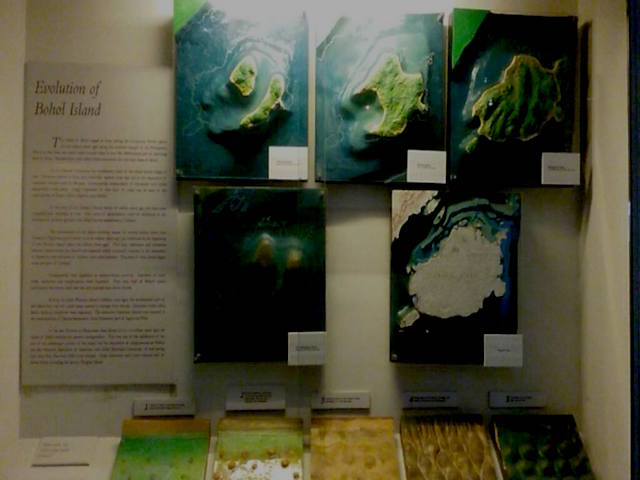MARIBOJOC, Bohol – A heart-shaped fossilized tooth of a megalodon, one of the largest predators to have lived on earth, has been found in a village in Maribojoc, putting the coastal town in the central Philippines on the world map of the extinct giant shark’s prehistoric presence.
National Museum Assistant Director Angel Bautista confirmed during a recent visit here that the relic found on March 1, 2018, is indeed a fossilized megalodon tooth, Bohol Museum Officer Charlemeine R. Tantingco told VERA Files.
He said the fossil is now “being prepared for conservation in the National Museum in Manila and will be brought back to Bohol soon.”
The 105-mm-long and 65-mm-wide tooth was found at the Rizal Plaza in Maribojoc, some 14 km from the provincial capital, Tagbilaran city, by Venjo Busalla, from the Escuella Taller Inc, a group that trains local youth on heritage restoration.
He said he knew it was a megalodon tooth as soon as he saw it. “It was half buried in soil and I immediately recognized it. This is what happens when you watch animal planet too much …”
The find, Tantingco said, will put Bohol, particularly Maribojoc, on the world map of megalodon prehistoric presence, adding that the place now counts among very few areas on earth that used to be inhabited or where the huge predator passed by.
The soil at the park where the tooth was found was believed to have come from a fish pond near a limestone quarry in Abatan, an ecotourism area, according to Joel Dahiroc, National Museum Heritage Site Management Assistant, who said three megalodon fossil teeth have been found so far in the Philippines. In 2015, a megalodon tooth was found in a cave in Samar province.
The latest discovery will boost plans to make the Abatan River estuary area an ecological living museum, said Emilia M. Roslinda, executive director of non-government organization PROCESS-Bohol Inc. which runs a heritage-based ecotourism program with Maribojoc and four other towns traversed by the Abatan River.
The area is now popular among both foreign and local tourists for its century-old mangrove forest and firefly tours.
Megalodon (Carcharoclesmegalodon), meaning “big tooth,” is an extinct species of shark that lived approximately 23 to 2.6 million years ago, during the early Mioceneto the end of the Pliocene, according to the Wikipedia.
Since the body of the megalodon was made up mostly of cartilage, no full fossil has been found of the creature that can be reconstructed, it says, adding that scientists have estimated its size mainly on the basis of fossilized teeth and very small bone fossils found in various parts of the world.
In a video post, Busalla, a Maribojoc native, showed the exact place at the Rizal Plaza where he found the tooth: on the ground of the finely manicured plaza behind one of the park chairs in front of the statue of national hero Jose Rizal.
“This is the coolest thing I’ve ever found at the Maribojoc Rizal park,” he says, while showing his find fitting the palm of his hand. The video then presents the measurements of the tooth: 65 mm in width, 105 vertical angle, and 100 mm straight vertical.
Until around 1.8 million to 10,000 years ago during the early Miocene, the main Bohol Island was still underwater, according to a summary of the island’s prehistory on an embossed map in the Bohol Museum.

Photo of Geological Prehistory of Bohol Island. (By Cooper Resabal)
“In the late Pliocene to Pleistocene time (about 2.5 to 1.8 million years ago) the island of Bohol attained its present configuration…due to the upliftment of the rest of the submerged portion of the island and the deposition of conglomerate at Mabini (town) and the extensive depositing of limestone rock called Maribojoc limestone,” a narrative beside the map says.
“Scientists suggest that megalodon looked like a stockier version of the great white shark, though it may have looked similar to the basking shark(Cetorhinusmaximus) or the sand tiger shark Carchariastaurus),” says Wikipedia.
Peter Klimley, a shark expert at the University of California at Davis was quoted by National Geographic in a 2008 interview to have said:”A great white is about the size of the clasper, or penis, of a male megalodon.”
“Regarded as one of the largest and most powerful predators to have ever lived, fossil remains of megalodon suggest that this giant shark reached a length of 18 meters (59 ft). Their large jaws could exert a bite force of up to 108,500 to 182,200 newtons (24,390 to 40,960 lbf). Their teeth were thick and robust, built for grabbing prey and breaking bone,” according to Wikipedia, adding that the creature is believed to have “a profound impact on the structure of marine communities.”
“The fossil record indicates that it had a cosmopolitan distribution. It probably targeted large prey, such as whales, seals, and giant turtles. Juveniles inhabited warm coastal waters where they would feed on fish and small whales. Unlike the great white shark, which attacks prey from the soft underside, megalodon probably used its strong jaws to break through the chest cavity and puncture the heart and lungs of its prey,” Wikipedia states.
For still unknown reasons, the megalodon went extinct some two million years ago, during the middle Miocene era.
Scientists have theorized that the megalodon may have been “unable to adapt to changing ocean conditions,” according to a National Geographic report (August, 2013). It said: “Megalodon thrived during a time when the Earth’s oceans were generally much warmer, and conditions were much more uniform.”
Throughout the Miocene period, the Isthmus of Panama started to form, “culminating with the closure of the Central American Seaway around 3 million years ago,” it explained.
The formation of the said isthmus “shut off any exchange between the Atlantic and Pacific oceans, and one consequence of this was that regions of Earth’s seas became cooler,” the National Geographic said.
Unlike its nearest cousin, the great white shark, “megalodon may have been unable to evolve an endotheramy, or the ability to maintain an elevated body temperature,” it pointed out.
Catalina Pimiento, a shark researcher studying megalodon at the University of Florida, cited another possible factor in its decline – the rise of competitors such as killer whales. “Being social hunters, it has been suggested that they outcompeted megalodon’s hypothesized solitary hunting style,” she pointed out in a blog.
She said that studying extinct sharks like megalodon can have implications that are relevant to today’s world. “Great sharks today, like Megalodon in the past, are apex predators impacting communities via top down control.”
“As we change the ocean, we also have bigger cascading effects on entire ecosystems. Understanding the past – how this shark interacted in its community—can aid in making policy for marine systems,” the scientist added.

